Today was the final exam for my N1 grammar class. I think I did okay. Not great, but good enough. JBPP takes up a lot of time, as do my regular classes, and daily life eats up another chunk. I’m taking this more as an introduction to N1 level grammar, because I know that there’s still a lot I have to learn, so I’m not worrying too much about it right now.
We’re starting to do a lot of reviewing for the upcoming big tests in the main classes on Wednesday. Fun.
I’m a little tired after all the traveling this weekend, but it was fun, and I feel recharged.
In JBPP, we started working on how to mail letters. Snail mail is still important every now and then, so I have to know how to send letters properly. And it’s the sort of skill that transfers over to email as well.
Souvenirs!
Here are a few photos of the souvenirs I bought for everyone in Kyoto. I’m actually posting this from the future, but it fits with my “Kyoto Arc” here.
The cookie/wafer things came in two varieties:
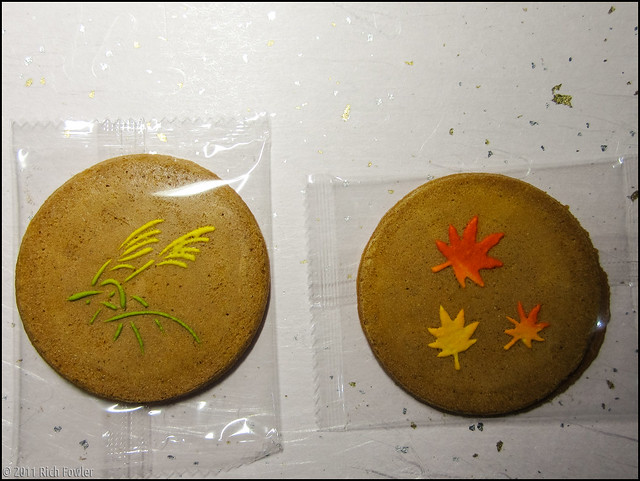
Anyway, they were a big hit with everyone. People like getting stuff.
How to Read Nutritional Info on Japanese Food!
Since I’m just tacking stuff onto this post, I might as well tack this on, too. It’s a really important survival skill in Japan if you have any dietary needs. That skill is how to decipher those labels!
Let’s start with the nutrition info from my cheese slices:
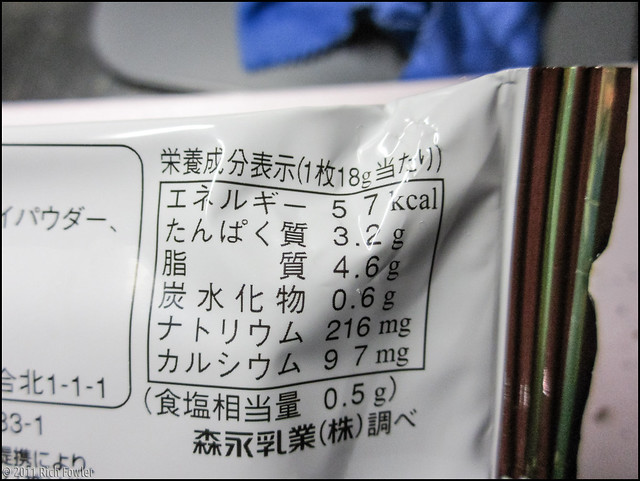
So the æ „é¤Š bit above the box is saying “Nutritional Information.” 1æžš means one slice, 18g 当ãŸã‚Š means approx. 18 grams. (Well, it means exactly 18 grams, but realistically, it’s approximately.)
Now, let’s analyze the stuff in the box:
- エãƒãƒ«ã‚®ãƒ¼ this is “energy,” measured in calories. (They use the more accurate kcal, for kilocalorie, but we just call them calories in the US.)
- ãŸã‚“ã±ã質 this is protein.
- 脂質 this is fat.
- ç‚水化物 these are carbohydrates.
- ナトリウムthis is sodium.
- カルシウムthis is calcium.
The last bit, the é£Ÿå¡©ç›¸å½“é‡ bit, is just telling you the table salt equivalent of the sodium in the product. So each slice has roughly half a gram of salt in it.
Let’s apply this to convenience store food, because I eat a lot of it. (It’s probably bad for me!)
I bought some butajiru udon the other day. (It’s pork soup with udon noodles in it.)
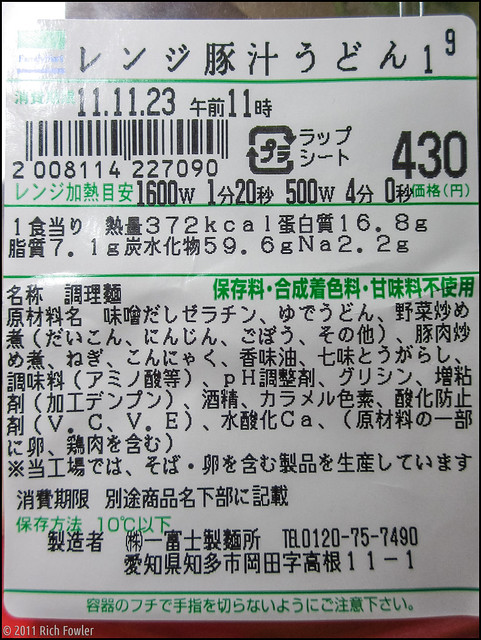
Okay, the 11.11.23 bit is the “best by” date. 2011, November 23 is how you read it. The プラ bit means that the whole thing is recycled with the plastic trash.
Below that, you see 1600w and 500w? Those are cooking times depending on your microwave’s wattage. One minute and twenty seconds for a 1600 watt, and four minutes for a 500 watt. (Useful!)
Now, under that is the actual nutritional information.
- 1食当ãŸã‚Š we saw something similar before, but basically it means “one serving.”
- ç†±é‡ is our calories again, just using a different way to say it.
- 蛋白質 is just another way to write ãŸã‚“ã±ã質, except they used kanji. It’s still protein!
- 脂質 is back again. It’s still fat.
- ç‚水化物 is also back again, still carbohydrates.
- ï¼®ï½ refers to sodium by its periodic table name.
Everything else is the list of ingredients, and the address of the maker.
Hope this helps you figure out what’s on your plate!
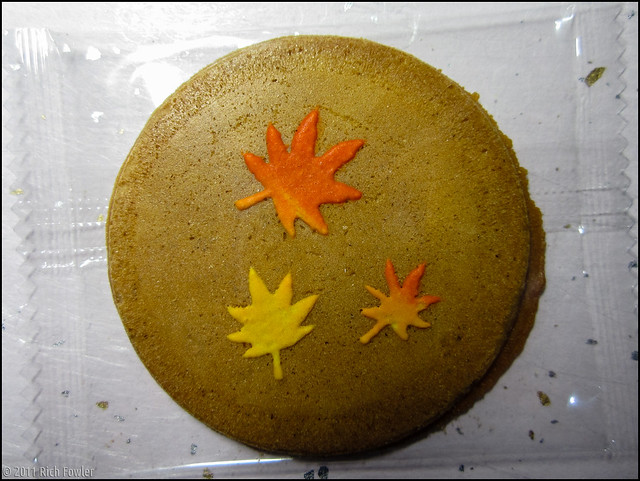
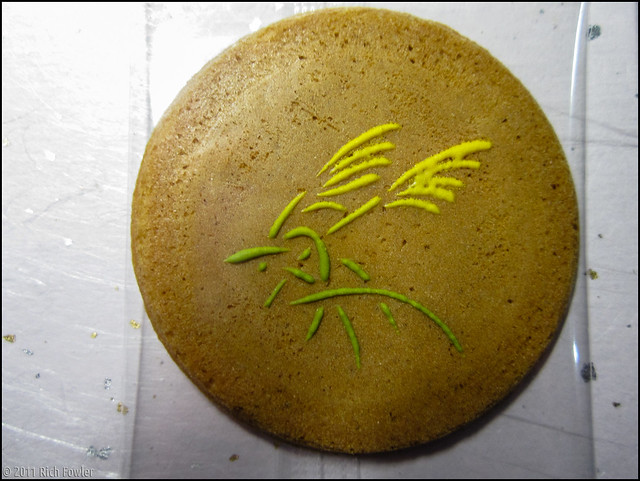
Sorry, the comment form is closed at this time.